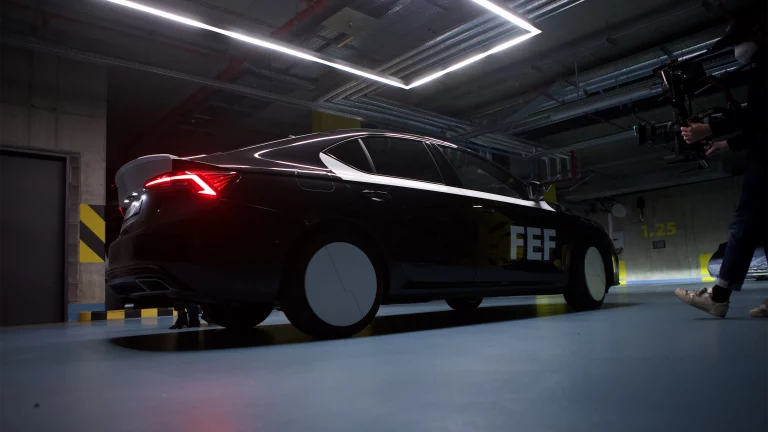Visionary designers
In science fiction films, filmmakers always try to determine which model of car is best suited to a particular character or role. In the end, Czech cars were preferred (the film also features Petrov's Czech piano). It goes without saying that the filmmakers could not modify the fleet of new Skoda cars they borrowed strongly and irreversibly, so they had to use plastic covers to create police graphics or a different transition from the radiator grille to the hood and so on. Octavia RS Police We created this mesh from FOREX, which is a very thin sheet of PVC that is flexible and easy to cut and shape. “These overlays are used to cover the desired areas, which are then worked on in computer post-production,” explains Ondrej Lipinski, the film’s engineer.

after

before
Radiator grille for the Octavia RS Police with decals and after final production | © Film Collective, 2023
The film is set two decades in the future, which isn't that long in terms of car development and design. However, the filmmakers worked on the assumption that by then the cars would be fully autonomous – at least in urban traffic – although they would still have a steering wheel. “We sensed early on that we would see continuous strips of lights at the rear and front of the body. This has been confirmed today because there are cars that already look like this, but when we started thinking about the design of the car six years ago, people outside the car industry found it surprising or They thought it was just a gimmick for the movie. To me it seemed unavoidable, and it was important for me to work it into the final design – an uninterrupted high bar where you don't see reflectors on the edges anymore. Naturally, we did it because we didn't want it to look The cars were outdated by the time the film was released – and the design of the cars in the real world actually moved more slowly, with a narrow line connecting the more massive traditional lights, the director explains.
 Taillights joined a futuristic line © Film Collective, 2023
Taillights joined a futuristic line © Film Collective, 2023

